Tribe Platycercini Order Parrot | Superfamily Psittacoidea Subfamily Platycercinae Genus Eunymphicus Phylum Chordata Rank Species | |
Similar Eunymphicus, Parrot, Bird, Ouvea parakeet, Cyclopsitta | ||
The horned parakeet (Eunymphicus cornutus) is a species of parrot in the genus Eunymphicus, in the family Psittaculidae. Eunymphicus cornutus is a medium-sized parrot endemic to New Caledonia. It is called "horned" because it has two black feathers that protrude from the head and have red tips.
Contents

Appearance
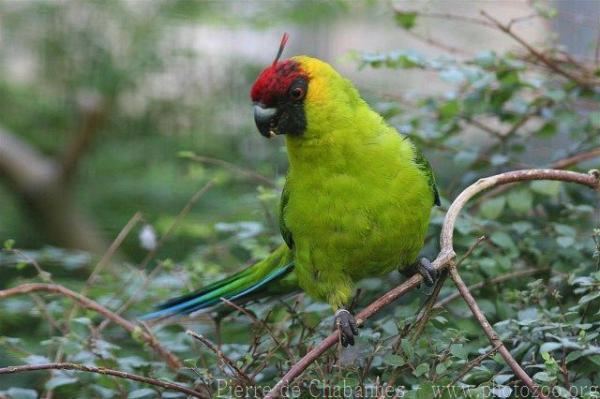
Adult birds usually measure approximately 32 cm (or about 14 inches) in length, including the tail. Like many parrots, the horned parakeet is primarily green in color. This parrot has a yellowish nape with a black and red face and bluish wings and tail. Its most striking feature is a two-feather black crest, with the crest feathers tipped in red.
Social ecology
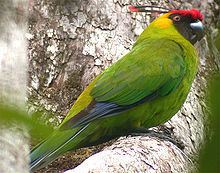
It preferentially selects rainforest and laurel forest habitat, but will accept scrublands or savannah. It lives in humid pine forests on New Caledonia, especially when Agathis and Araucaria pines are present.
Small family groups, or pairs, will forage in the canopy for their diet of nuts and seeds.
It makes a nasal "kho-khoot" contact call, and also makes a wide range of shrieks and chuckles.
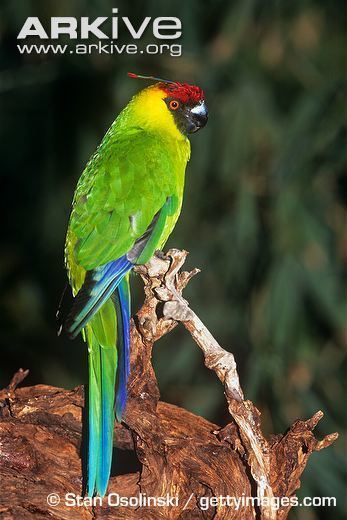
Horned parakeets will nest either on or near the ground, and also in hollowed-out logs, or nest hollows in dead trees. Uncommon among parrots, horned parakeets have been reported nest-sharing. The number of eggs laid is usually 2–4. Incubation lasts 21–22 days (in captivity) and the time from hatching to fledging is approximately 5 to 6 weeks (again, in captivity).
Threats
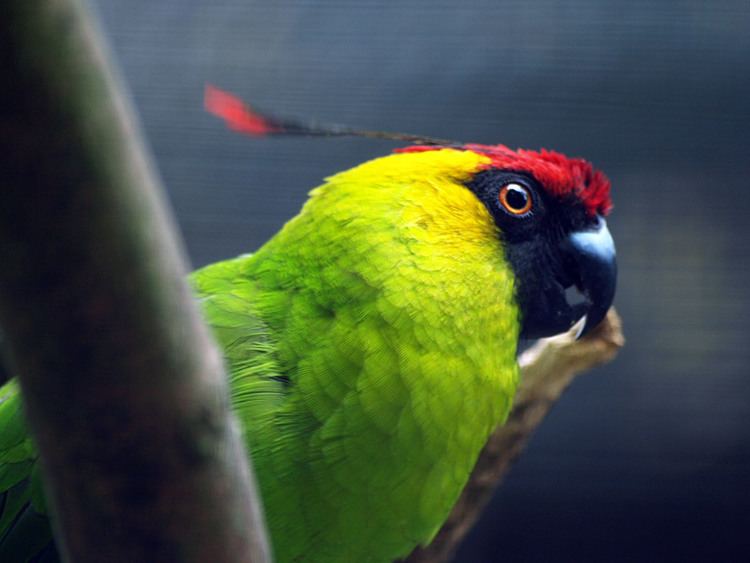
This bird has declined since the 1880s, but it is still found in some range on New Caledonia and recent population estimates believe that there are over 5000 birds left.
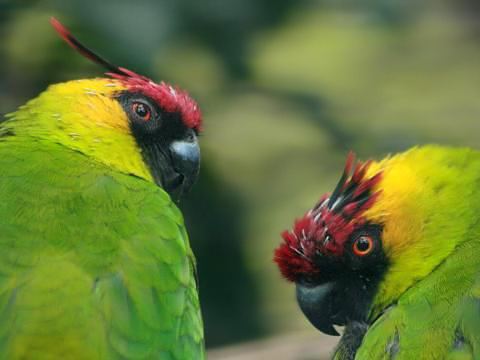
Main threats to the horned parakeet are the black rat, the wildcat, the introduced Rusa deer, logging, La Nina (wet) years, and Psittacine beak and feather disease, a severe virus which is known to affect ~42 species of parrots. Humans poaching the birds for local trade is rare, because the birds' nests are difficult to find, and more importantly, there are no ingrained local customs regarding keeping birds as pets.
Legal status
The horned parakeet is listed by the IUCN as Vulnerable, due to their restricted range and small, declining population size. These parrots are listed as CITES I as of year 2000, meaning all international commerce regarding the species is prohibited. In 2014, the European Union listed the species as Annex A, which means all intra-EU trade is prohibited. The parrots are also fully protected under New Caledonian law.
Taxonomic note
In 1998, through DNA studies, it was discovered that Eunymphicus cornutus, the horned parakeet, and Eunymphicus uvaeensis (formerly Eunymphicus cornutus uvaeensis), the Uvea or Ouvea parakeet, were actually separate species. The genus now contains 2 species: E. cornutus and E. uvaeensis.
